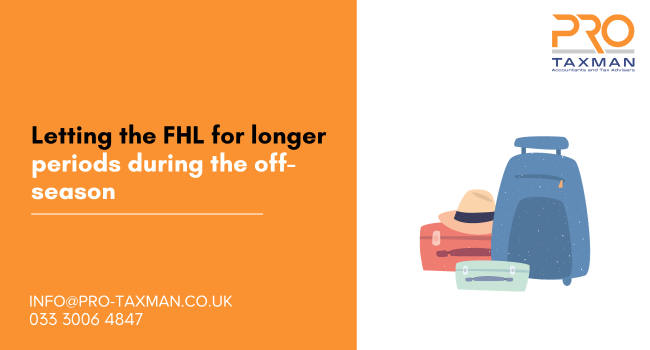Letting holiday properties, particularly in coastal resorts, may have a strong seasonal bias, and when business is slow during the off-season, it can be tempting to let the property on a longer let. For example, a property could be let on short-term holiday lets over the summer months and on a six-month residential let during the winter. However, adopting this approach may have tax implications and prevent the property from accessing the tax benefits available to furnished holiday lets (FHLs).
Definition of a furnished holiday let
Furnished holiday lets benefit from more generous tax rules than residential lets. They are able to access capital gains tax business reliefs, and also are not subject to the interest rate restriction applying to residential lets, meaning interest and finance costs can be deducted in full in calculating the taxable profit.
However, these benefits are only available to properties that pass certain tests. To qualify as an FHL the property must be let furnished and must meet all three of the following occupancy conditions.
Condition 1 – the pattern of occupation condition
For the property to be an FHL, the total of all lets that exceed 31 days must not be more than 155 days in the year.
Condition 2 – the availability condition
The property must be available for letting for at least 210 days in the tax year.
Condition 3 – the letting condition
The property must be actually let for at least 105 days in the tax year. Where this test is not met in relation to a particular property for a particular year, the property may qualify as an FHL by virtue of averaging or a period of grace election.
For a continuing let, the tests are applied for the tax year.
Implications of long lets
Letting an FHL for longer periods may mean that the pattern of occupancy condition is not met. Where lets of more than 31 days total more than 155 days in the tax year, the property will not be an FHL. This will mean that during the off-season, a longer let cannot exceed 155 days (roughly five months) – lets longer than this will mean that the pattern of occupancy condition is not met. Assuming lets are kept at below 31 days during the peak season, the property can only be let on longer lets in the off-season for a maximum of five months if the goal is to retain FHL status.
However, the maxim of not letting the tax tail wag the dog should be borne in mind – it may be preferable for the property to be let on a residential let during the off-season rather than it being left empty, even if this jeopardises its FHL status.
Need professional accounting service or tax advice? Contact us to book a 15-min Free Consultation with us today.
To find out more please follow us on Facebook, Twitter, or LinkedIn. Feel free to contact us on 0333 006 4847 or request a call back by texting 075 6464 7474

